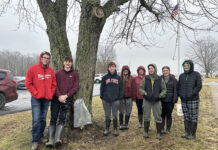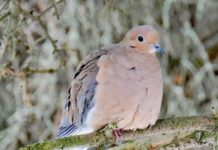Parents have always had concerns about what might make their kids sick. When I was a youngster, most of those fears revolved around the childhood maladies of mumps, measles and chicken pox. Those viruses could clear a classroom faster than a fire drill. Fortunately, most survived just fine and were rewarded with a lifetime of immunity. Thankfully, vaccinations have made those risks a lot less worrisome.
Unfortunately, I also suffered from one other issue that caused me problems then and can still stir some queasiness to this day — innards sensitivity. During my youngest years, my exposure to innards was relegated to Thanksgiving and Christmas and involved a store-bought turkey whose mysteriously saved innards were stored mercifully in a rather opaque plastic bag. I had no idea that such things were added to the dressing I loved.
It wasn’t until begging to tag along on a rabbit hunt that I was first fully exposed. It went something like this: Dog finds hidden rabbit. Rabbit runs. Dog chases. Dad shoots. Rabbit tumbles. So far, so good. Then, out comes Dad’s pocket knife — the same one he used to cut up chunks of cheese during our snacking in the car just a couple of hours earlier. My brother and I watched carefully to see what a real hunter needed to do next. “Come here boys, let me show you how to do this the right way,” he said as we drew even closer.
He made a surgically precise incision and began his zoologically-based physiological explanation. He started to describe the placement of organs, what to look for in case the rabbit was sick and identified the heart. At some point, he nudged me in the shoulder. “This would be easier to learn if you opened your eyes,” he said. Gritting my teeth, I allowed my eyes to open as if I were trying to stare into the sun. That’s when I saw those innards — and also when my own innards began to do push-ups.
Now, I know that some of you might find the subject of innards a little off-putting. I get it …. It seems like the only regular folks exposed to such things are farmers, butchers, hunters, anglers and cat owners. Oddly, since that time innards have become something of my way of life. No successful game warden will ever get through a career without having to physically poke and search innards for evidence. In fact, no one hoping for a lifetime of working in fish and game management will escape an innards education, either. Even so, I still find my eyes getting a little watery and my stomach reaching up and tickling my trachea almost whenever I’ve tasked myself to the required work. I’ve just had to learn to gut it out.
Learning how to gut it out
So, what if you’re new to hunting and fishing and want to add some all-natural, non-steroidal, locally raised, free-range meat to your diet? How do you learn this business of proper meat preparation from “here it lies” to “there it’s cooking?”
The easiest way is through an experienced mentor or friend. They can show you the ropes while performing the task slowly while explaining the ins and outs of innards and other important surgical-like procedures. They can supervise your work the first few times to make sure that you understand. Such experience allows you to learn the quickest and neatest way to do the dirtier part of the work, right up through packaging and the much more pleasant event of cooking.
There are also plenty of books that should find a useful spot in your home library. Two of the better offerings are from Steve Rinella, who hosts the long-running television show MeatEater and the top-ranked MeatEater podcast. He’s a New York Times bestselling author of 10 books, including the very relevant “The Complete Guide to Hunting, Butchering and Cooking Wild Game: Vol. 1, Big Game” and “Vol. 2, Small Game & Fowl.” You’ll find them both at his website’s store at https://store.themeateater.com/. Rinella also offers some great wild game recipe books. These make great gifts for experienced hunters and to any innards-challenged novices.
YouTube videos are fairly easy to find concerning field care of game and some of the best are, not surprisingly, on Rinella’s website www.themeateater.com. There is a search bar where you can plug in field dressing — but get comfortable. If you’re an aspiring hunter or angler or already an accomplished outdoor wanderer, you’re going to end up spotting some other videos that might have you missing bedtime.
Finally, there is the Ohio Division of Wildlife. They have devoted a portion of their website to wild game preparation and to getting started in various consumptive outdoor activities. Easy to find, just go to www.wildohio.gov then hit the left-side tab “Wild Ohio Harvest Community.” You will find written and video information on a wide range of subjects about getting started, field dressing, processing and cooking wild game.
Thankfully, innards don’t play much of a role for most of the game preparation work except for the field dressing portion. After being safely discarded away from pets, that awful offal can be left as a blurring memory and as a welcome meal for scavengers. You know, now that I think about it, I’d seen dad sharpen that old pocket knife but never, ever do I remember him washing it …
“I always figured the reason God invented skin was so people like me wouldn’t have to look at innards.”
– Patrick McManus
















Jim, I really enjoyed your article! Your storytelling is engaging, and I appreciate how you blended humor with valuable life lessons from your hunting experiences. It’s great how you emphasize the importance of patience and learning over time. Your advice for aspiring hunters is spot on, especially the reference to practical resources like Steve Rinella’s work. Keep up the fantastic writing, it’s both informative and entertaining!